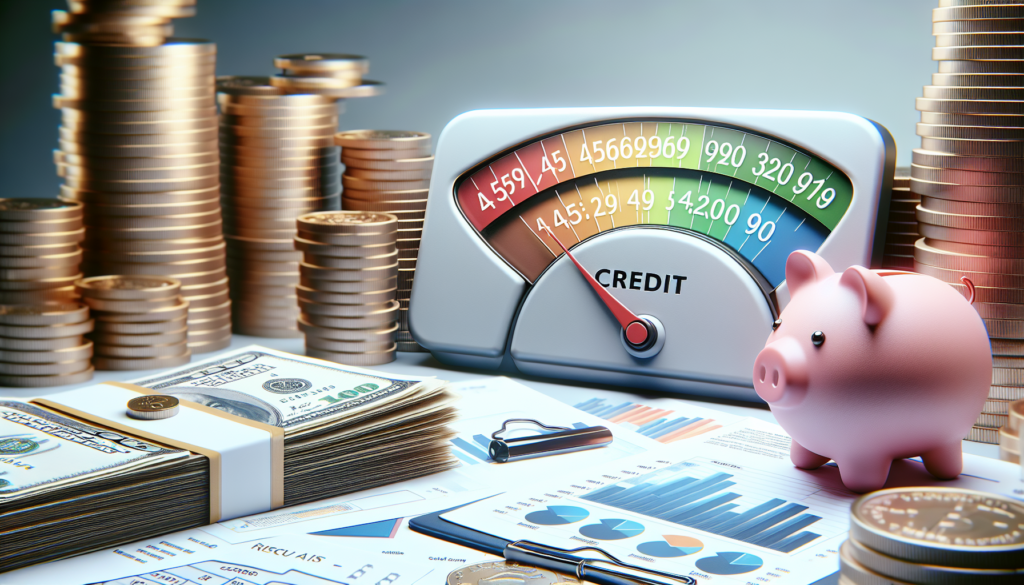
Re-establishing credit after filing for bankruptcy is a concern shared by many individuals who have gone through or are considering the bankruptcy process. While bankruptcy can provide relief from overwhelming debt, it also poses challenges to rebuilding your credit. Here’s a comprehensive guide on how to navigate credit rebuilding post-bankruptcy, including timelines, strategies, and what to expect.
Timeline for Becoming Creditworthy Again
After a bankruptcy discharge, the timeline for becoming creditworthy again can vary, but it’s possible to start seeing improvements in your credit score within a few months. A Chapter 7 bankruptcy remains on your credit report for up to 10 years, while Chapter 13 bankruptcy stays for 7 years. Despite this, the impact of bankruptcy on your credit score diminishes over time, especially if you take active steps to rebuild your credit.
Practical Tips for Improving Credit Scores
- Review Your Credit Report: Start by obtaining a free copy of your credit report from AnnualCreditReport.com. Ensure that all accounts included in the bankruptcy are properly reported as “discharged” and show a zero balance to avoid inaccuracies that could negatively affect your score.
- Secured Credit Cards: Apply for a secured credit card, which requires a cash deposit that serves as your credit limit. Use this card for small purchases and pay off the balance in full each month to build a positive payment history.
- Credit Builder Loans: Consider a credit builder loan from a credit union or community bank. The loan amount is held in a bank account while you make payments, building credit history. Upon completing the loan payments, you gain access to the funds.
- Authorized User Status: Becoming an authorized user on a family member or friend’s credit card can help you benefit from their positive credit history, provided they use credit responsibly.
- Timely Payments: Ensure all current bills and obligations, such as rent, utilities, and any new credit obligations, are paid on time. Payment history is a significant factor in your credit score.
- Budget and Save: Create a realistic budget to manage your finances and avoid falling back into debt. Establishing an emergency fund can help cover unexpected expenses without resorting to credit.
Types of Credit Products Available Post-Bankruptcy
Initially, the credit products available to you may come with higher interest rates or require security deposits. Besides secured credit cards and credit builder loans, you might qualify for retail store cards or subprime credit cards designed for individuals with poor or rebuilding credit. As your credit improves, you’ll qualify for better terms and more traditional credit products.
Accelerating the Credit Rebuilding Process
- Stay Below Credit Limits: Keep your credit utilization low (ideally below 30% of your available credit) to positively impact your credit score.
- Diversify Your Credit: Over time, having a mix of credit types (e.g., revolving credit and installment loans) can improve your credit score.
- Regularly Monitor Your Credit: Use free credit monitoring services to track your progress and address any issues promptly.
Challenges and Pitfalls
- Avoid High Fees: Be wary of credit offers with high fees or interest rates. Read the fine print and understand the terms before accepting new credit.
- Patience is Key: Rebuilding credit is a gradual process. Don’t be discouraged by initial setbacks or slow progress.
Rebuilding credit after bankruptcy is undoubtedly challenging, but it’s far from impossible. By adopting responsible financial habits, utilizing tools designed to rebuild credit, and staying informed about your credit status, you can gradually improve your creditworthiness. Remember, bankruptcy provides a fresh start, and with time, discipline, and patience, you can work your way back to good credit.

Get a Free Bankruptcy Case Evaluation